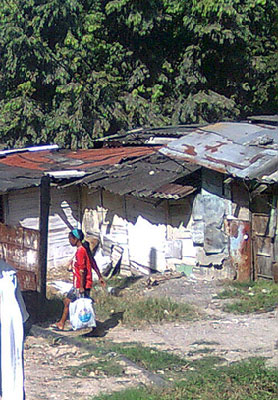Guantanamo, Cuba Has Its Shanties Too
Rosa Martínez

HAVANA TIMES — According to Isbel Diaz Torres, the writer of one of Havana Times’ diaries I enjoy reading the most, Indalla is a shantytown located in the very heart of the Cuban capital which not even the president of its municipality knew existed.
I do not live in the capital. In fact, I live in the province which is furthest from Havana, in my beloved Guantanamo.
Though some refer to my province as “Cuba’s Cinderella”, my city is really not much different from other provincial capitals around the country, with the possible exception of Havana, Santiago de Cuba, the second most important city on the island, or, say, Matanzas.
Like most of the country, Guantanamo is still recovering from the effects of Cuba’s Special Period, a crisis which lasted far too long and damaged a good part of the provinces’ economic infrastructure.
It is also suffering the effects of a centralized economy that hasn’t yet been able to address the needs of the population, particularly of those populations in the regions furthest from the capital.
Here in Guantanamo there are many Indallas, and I imagine all provinces have at least one shanty neighborhood of this nature – areas of the city where poverty, despair and hopelessness reach veritable extremes.
I myself live in a Indalla, surrounded by shabby, makeshift houses that threaten to collapse at any moment, by people with a high rate of alcoholism, unemployment, delinquency and all forms of violence.
I don’t know whether we need an outbreak of cholera to draw a government authority to this neighborhood which even the gods have forsaken. I don’t know whether the houses here need to collapse entirely for their inhabitants to finally get some kind of aid (and it would be hard to imagine such a situation, for these houses are like trailers, assembled and taken apart with relative ease).
What I am certain of is that this Indalla, like the one in Havana, doesn’t need the government to come and evict its residents. On the contrary, what this neighborhood needs is for the government to include it in its development plans, for it to make building materials available, at reasonable prices which the population can afford, and thus oblige people to construct homes with basic living conditions.






If that old imbecile would have begun reforms in 1992,Cuba would not be where it is today.